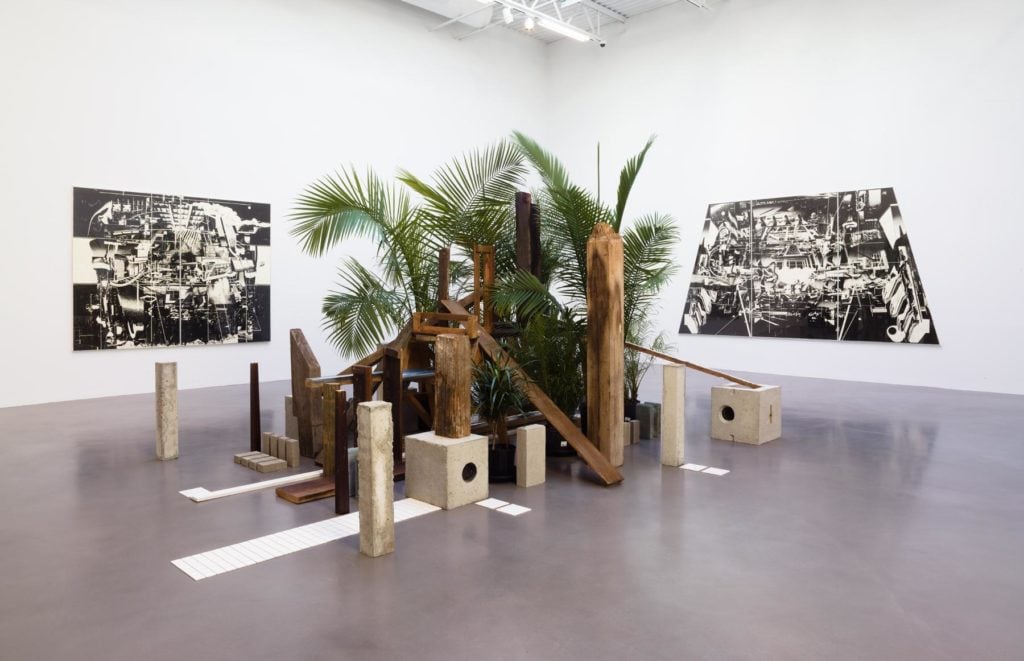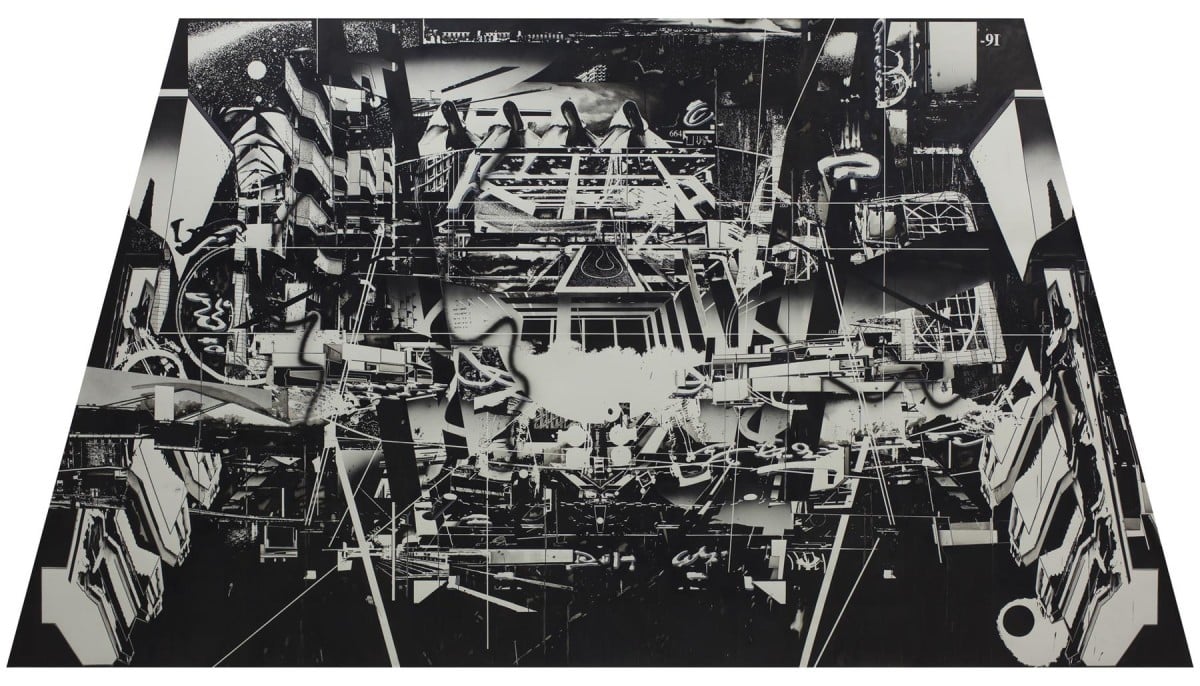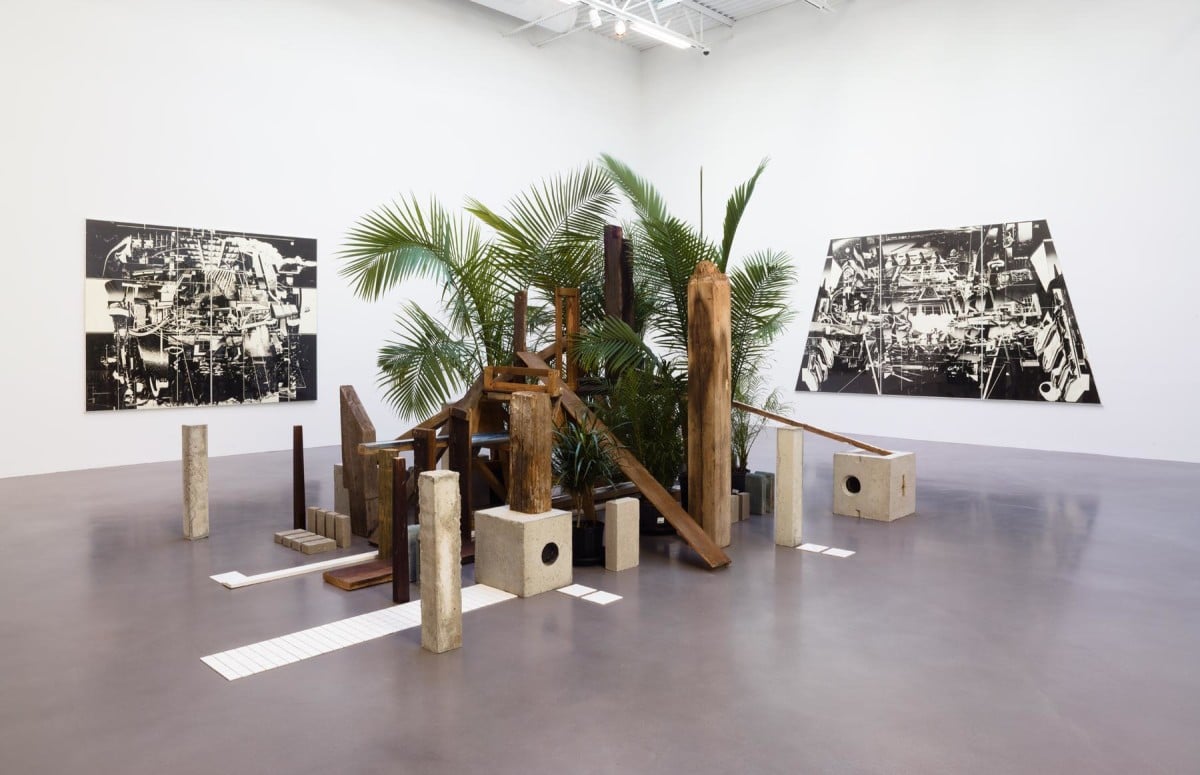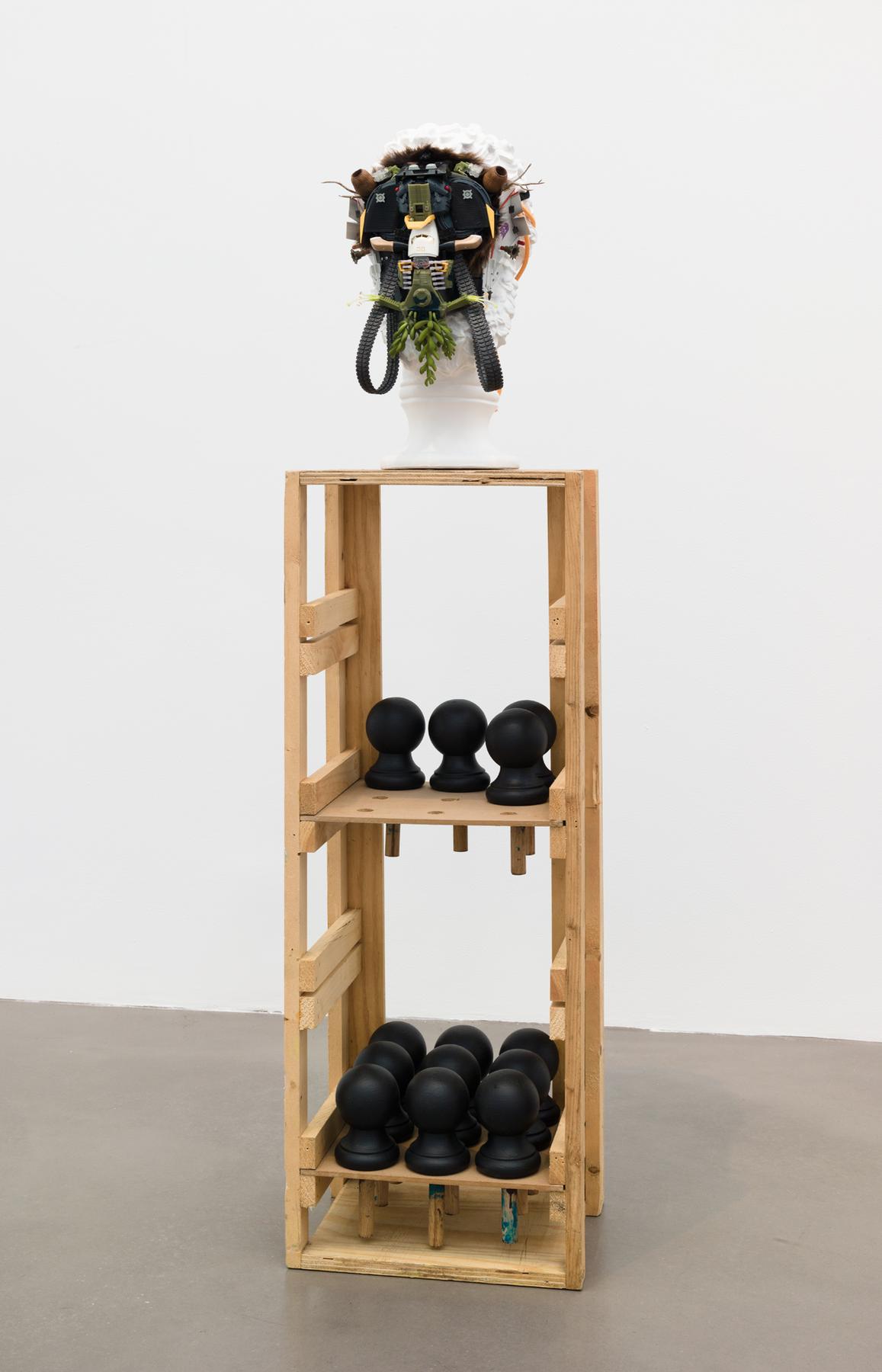Art & Exhibitions
Artist Hiroki Tsukuda Is Not Afraid to Get Weird in His First US Show
The artist, who is colorblind, creates complicated black-and-white collages.

Image: Courtesy of Petzel Gallery.
The artist, who is colorblind, creates complicated black-and-white collages.

Kathleen Massara


Hiroki Tsukuda, Entropy, 2015.
Image: Courtesy of Petzel Gallery.
Mirrored images of industrial landscapes, feral plants, and outer space themes find their way into Hiroki Tsukuda’s first US exhibition, “Enter the O,” at New York’s Petzel Gallery.
The 37-year-old Japanese artist, who is colorblind, painstakingly constructs dense collages with the aid of a computer, combining images found both online and in his collection of printed materials. He then draws the collages by hand at large scale in ink and charcoal on paper, adding drips of paint and other seemingly impromptu gestures to complete the monochromatic images of worlds within worlds.
After graduating from Tokyo’s Musashino Art University in 2001, Tsukuda began working a graphic designer, but switched to the business of art-making after being picked up by Nanzuka, his current gallery. In previous interviews, he’s listed German artists such as Neo Rauch, Eberhard Havekost, and Frank Nitsche as influences, along with the Japanese architect Tadao Ando. Arguably, we also see the presence of Bernd and Hilla Becher‘s mechanized vision in his work, which invokes a dystopian, retro future-obsessed point of view.

Hiroki Tsukuda, “Enter the O,” Installation view, 2016.
Image: Courtesy of Petzel Gallery.
Tsukuda is a self-professed daydreamer, and, if we’re being honest, an unrepentant sci-fi nerd. “As a child, surrounded by abundant nature, I was devoted to video games,” he tells Freunde von Freunden.
The artist was born the same year that construction began on the Great Seto Bridge, which, at eight miles long, is proudly billed as the world’s longest two-tiered bridge, and connects his rural home in Shikoku to Honshu, Japan’s main island. Perhaps for that reason, notions of invention and connection are key to understanding Tsukuda’s work.
His drawings, sculptures, and installations reflect how information is assembled, disassembled, and disseminated; however, the images aren’t merely sterile reproductions of his desktop-assembled collages. Instead, the street art–style flourishes (a drop of paint here, a sprayed squiggle there) and the jumble of dystopian iconography give the viewer the sense that things aren’t always as they seem. It’s not a remarkable insight, of course, but then viewers looking for depth won’t find too much of it here, despite the proliferation of images.
Luckily, the artist maintains a sense of humor throughout the show, and swerves from the uncanny to the absurd, as in his palm tree-filled installation, which takes over the middle of the gallery space, and is accompanied by local building materials the artist found while installing the show. (The store-bought trees are kept in their original plastic containers, with barcode stickers intact.)
“Whenever I would find things where they shouldn’t be,” he tells Elephant magazine, “I’d feel as if I had a glimpse into another world.”

Hiroki Tsukuda, Hooper, 2016.
Image: Courtesy of Petzel Gallery.
“Enter the O” is on view from January 14 – February 20, 2016 at Petzel Gallery in New York.